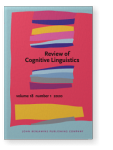Vol. 18:1 (2020) ► pp.180–212
“Hi, Mr. President!”
Fictive interaction blends as a unifying rhetorical strategy in satire
What makes The Daily Show with Jon Stewart so successful as social and political satire? Rhetorical theorists and critics have identified several mechanisms for satisfying the show’s satiric and parodic aim, which include parodic polyglossia, contextual clash, and satirical specificity (Waisanen, 2009). We present a unified account of meaning construction that encompasses these three mechanisms within the framework of blended fictive interaction (Pascual, 2002, 2008a b). Satire results from emergent effects of different conceptual configurations that have to be in place to integrate a pastiche of speech whose provenance originates in different and diverse contexts and genres. The integration of contradictory, conceptually disjointed pieces of discourse under the governing structure of the conversation frame accounts for the show’s most conspicuous satirical moments. These imagined interactions highlight facets of the real world for critical commentary. The thick description of an influential Daily Show segment deepens our understanding of contemporary political satire.
Article outline
- 1.Introduction
- 2. Conceptual Blending Theory and fictive interaction
- 3. The Daily Show: A satirical news program
- 4.Data
- 5.Analysis
- 5.1‘Addressing’ a real contemporary language user in a present-past reality blend
- 5.2‘Addressing’ a real contemporary language user in a present reality-fiction blend
- 5.3‘Speaking’ for a real contemporary language user in a present reality-past counterfactual blend
- 5.4‘Speaking’ for a real now-deceased language user in a counterfactual past-present reality-fiction blend
- 5.5Quoting a real contemporary speaker, fictively addressing another real contemporary language user in a past-present reality-nursery rhyme-advertisement blend
- 6.Conclusions
- Notes
-
References
